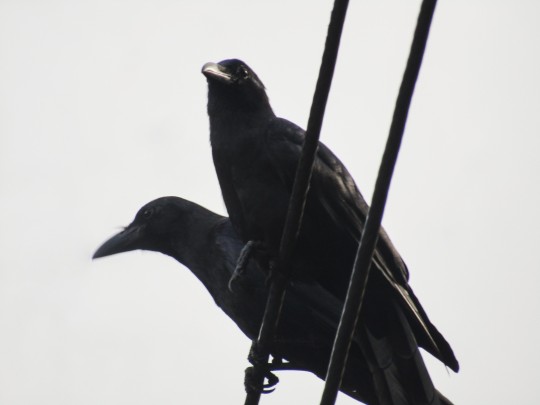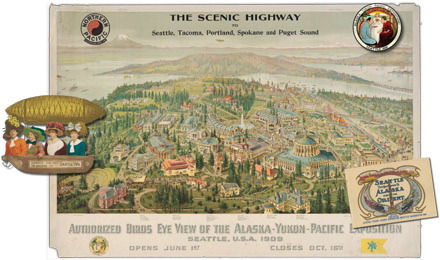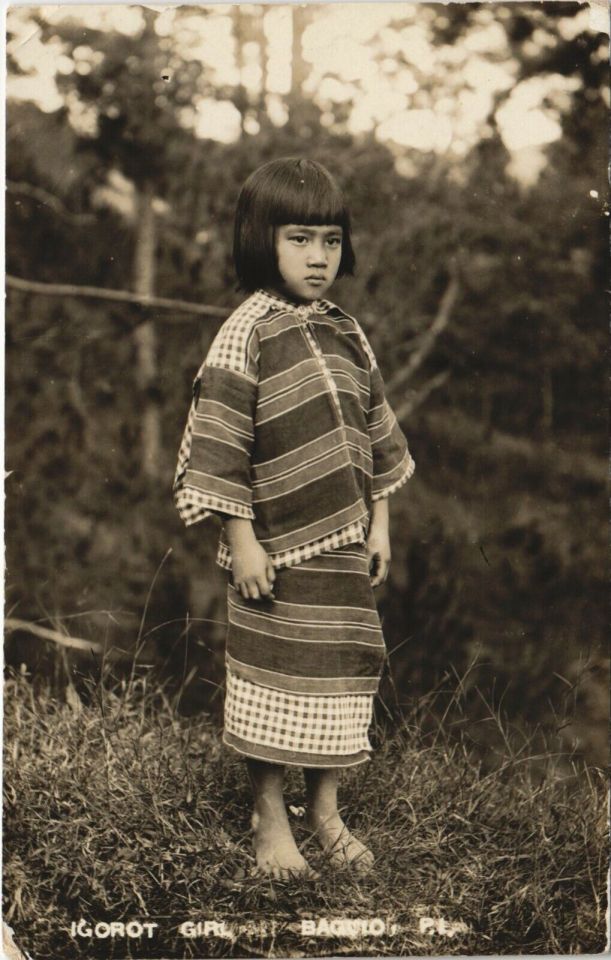#igorot
Text

hay naminhod kun he-a ya maid di kiingngohana (my love for you is beyond comparison)
happy international lesbian day <3
[mlm version]
#igorot#ifugao#ibaloi#philippines#filipino#artph#indigenous#gay#lgbt#lesbian#wlw#sapphic#digital art#original art#original characters#artists on tumblr#bare chest /#animal death /#eembulan#2023#with id#companion piece to my gay mlm igorots drawing! will post together later :)
1K notes
·
View notes
Text

Cesar Amorsolo - Tribal Girl, 1960
297 notes
·
View notes
Text

Ethnic Filipina Beauty - Pedro Amorsolo
153 notes
·
View notes
Text

Igorot girl from the Philippines
American vintage postcard
#vintage#photography#postkarte#igorot#carte postale#postal#girl#briefkaart#philippines#postcard#old#photo#ansichtskarte#sepia#american#postkaart#ephemera#tarjeta#historic
21 notes
·
View notes
Text
Elizabeth Keith on the apparent similarities between the Ainu and the Igorot, from her 1928 travelogue Eastern Windows: An Artist’s Notes of Travel in Japan, Hokkaido, Korea, China and the Philippines:
I find an extraordinary likeness between the Benguets [in northern Philippines] here in this southern island, and the far-off Ainu [of northern Japan]. I was talking about this one day with a well-known ethnologist from Manila, and he tells me that I am right. These people are of the same race, but how many centuries may have passed since they parted company, or how the Benguets or the Ainu crossed those seas and made such perilous journeys in their tiny boats, who may say?
Note: There is no known connection between Philippine ethnic groups and the Ainu of Japan. Filipinos are descended from two major ancestral groups, the first settlers (“First Sundaland People”) who arrived during the Paleolithic and later Austronesian-speaking migrants during the Neolithic, and are closely related to aboriginal Taiwanese people and other Southeast Asians. On the other hand, the Ainu are of Northeast Asian origin and are closely related to Siberian and other Japanese peoples. With this in mind, there are however fringe theories connecting Japan and Southeast Asia via Taiwan and the Austronesian expansion.
6 notes
·
View notes
Text

Love is in the air... on the wires
12 notes
·
View notes
Text
Katribu condemns harassment of CPA leader during court hearing (Facebook link)
Katribu Kalipunan ng Katutubong Mamamayan ng Pilipinas condemns the harassment experienced by Cordillera Peoples Alliance (CPA) leader Sarah Alikes during a court hearing in Baguio City on January 26, 2024. The hearing was related to the petition filed by Alikes, along with CPA leaders Windel Bolinget, Jennifer Awingan, and Steve Tauli, on November 23, 2023, to overturn their designation as terrorists by the Anti-Terrorism Council.
The harassment incident occurred inside the Baguio Justice Hall, where an individual named "Zyrus Tarnate" trailed the Cordilleran activists and later handed Alikes an empty envelope. A similar case of harassment also happened during their first hearing on December 14 of the previous year. An armed policeman identified as Patrolman Maruel Baniwaa Benito, based on his identification card, was spotted taking photos and videos of the four petitioners.
Katribu views these incidents of harassment, intended to threaten and intimidate victims of human rights violations, as brazen acts by state security forces. We hold the Marcos Jr. regime accountable should any harm befall the four CPA leaders. Clearly, Alikes’ experience is intended to silence them and other activists in similar situations.
#StandWithCPA #UpholdIPRights #StopTheAttacks
2024 Jan. 27
4 notes
·
View notes
Text
I love how I drew this and the details :))

#monkie kid folklore#monkie kid#lego monkie kid fanart#lego monkie king#lego monkie kid monkey king#monkey king#monkie kid monkey king#sun wukong#lego monkie kid sun wukong#monkie kid sun wukong#monkie kid fanart#igorot warrior#igorot
52 notes
·
View notes
Text
SISSIWIT
In southern Kalinga, sissiwit is the word for “bird” (in Tagalog, ibon).
There is an Igorot-associated song titled “Sissiwit” that also has an Ilokano version. The popular version of the song was composed and sung by Hilair Wacdagan of Tanudan, Kalinga.
11 notes
·
View notes
Text


Session Road // Baguio // July 2019
19 notes
·
View notes
Text

#slouchy hat#living my life to the fullest channel#long hat#knitted#fashion hats#winter hat#winter beanies#beanies#Igorota#igorot#pinay
2 notes
·
View notes
Text

karamak taytayni (don't leave me)
[wlw version]
#file name for this was titled 'gay igorots' btw. if you care#igorot#ifugao#ibaloi#philippines#filipino#artph#indigenous#gay#lgbt#digital art#original art#original characters#artists on tumblr#bare chest /#animal death /#eembulan#2023#with id#mlm
510 notes
·
View notes
Text

Wondering about the A.Y.P.E? From wikipedia: “The Alaska–Yukon–Pacific Exposition, acronym AYP or AYPE, was a world's fair held in Seattle in 1909 publicizing the development of the Pacific Northwest.” Read more here!
I always find the history and controversies around such things a fascinating reflection of the culture of the time. This article is a particular rabbit hole for things like The Seattle Socialist , Landscaper John Charles Olmstead , and The Igorot People.

#a.y.p.e.#alaska yukon pacific exposition#1909 world fair#world fair#pacific northwest#history#the seattle socialist#olmstead#igorot
5 notes
·
View notes
Text

Children at Bontoc Mt. Province, wearing their native clothing.
4 notes
·
View notes
Text

Igorot girl from Baguio, Philippines
American vintage postcard
#historic#philippines#photo#briefkaart#vintage#philippines american#girl#sepia#photography#carte postale#american#postcard#postkarte#baguio#postal#tarjeta#ansichtskarte#old#igorot#ephemera#postkaart
5 notes
·
View notes
Text
The big questions archaeologists want to answer also shape the value of their finds. They want to fill in the missing pieces of human history, and sometimes the newer pieces help complete the puzzle. Protecting and studying our entire past, not just the oldest parts, helps us get a full picture of how humans have lived and changed through time. So, in archaeology, it’s not just about discovering the oldest artifacts; it’s about uncovering and understanding the fullness of human history.
As an example, research in Ifugao confronts the prevailing notion that the antiquity of a site is its most defining feature. Previous studies have proposed that the terraces were to be at least 2,000 years old. However, Acabado and Martin’s studies suggest a more recent origin, around 1600 CE, coinciding with Spanish colonization. This new date does not remove the terraces’ significance but rather refocuses their historical narrative.
The terraces are not relics of the past; they are a testament to the Ifugao’s resilience and ingenuity. The revised dating indicates the Ifugao’s remarkable response to colonial incursion, a physical manifestation of cultural identity and resistance. Understanding these terraces as a relatively recent innovation underscores their role in Ifugao society’s adaptive strategies to external pressures.
This perspective challenges deep-seated assumptions about the value of ancientness in archaeological sites. It emphasizes the historical events that shaped the terraces and the community that created and maintained them. In doing so, it connects the past to the present, ensuring the terraces’ continued relevance to the Ifugao people’s living culture and their ongoing story of resistance, adaptation, and survival.
… Thus, the concept of prehistory, which implies a disconnection from the present, undermines Indigenous and local histories. Current research in Ifugao demonstrates a continuous historical thread that is woven into the fabric of Ifugao society. This continuity is manifested in the enduring rice cultivation practices and rituals that have been passed down through generations.
10 notes
·
View notes